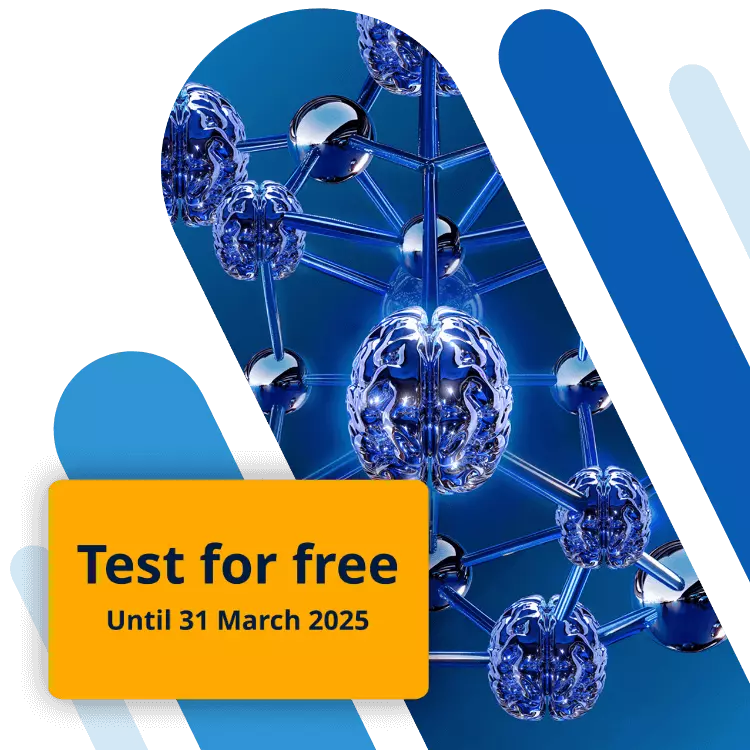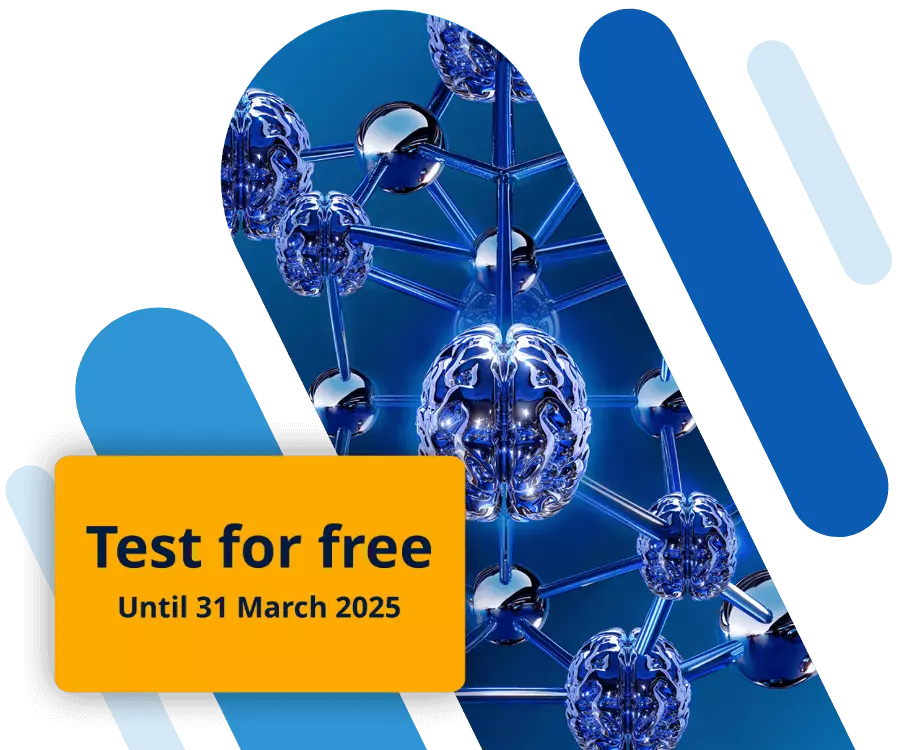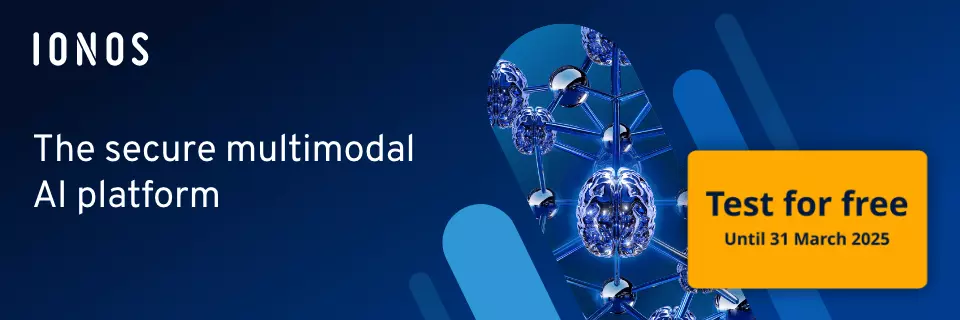What is text mining and how is it used?
Text mining is a sub-area of data mining that focuses on analysing unstructured or weakly structured text data and complex data sets. Text mining software based on Natural Language Processing, deep learning and big data is used to open up and structure text data and identify important findings, structures and correlations.
What is text mining?
Text mining, also known as text data mining, is a specialised sub-area of data mining. The process involves extracting and analysing information from large databases, data sets and primarily weak and unstructured texts. The data to be analysed is developed using various analysis techniques and converted into a structured form. This allows valuable insights, information and meaningful structures and patterns to be identified.
Unstructured formats such as documents, emails, posts on social media or forums, as well as the content of text databases are analysed. As they can differ greatly in terms of semantics, syntax, typography, size, subject matter and language, text mining offers the advantage of efficient pre-processing and analysis of large data sets for various purposes. These include sentiment analysis, applicant screening, market research, science and customer service.
How does text mining work?
Text mining is similar to data mining in the way it works but focuses on the analysis of unstructured or weakly or partially structured data. As around 80 percent of all data is available in unstructured formats, text mining software facilitates the processing and preparation of documents and large data sets. For this purpose, text data is analysed, converted into a structured form, clustered and categorised using modern quantitative and qualitative analysis technologies such as natural language processing and deep learning.
The text mining process can be broken down into the following steps:
- Data preparation and text preparation: Texts are first collected from various sources and in different formats. These include, for example, emails, documents, website content or thematically categorised databases. Once the data records have been collected, the texts are structured, normalised and cleaned up. Words are reduced to root and normal forms through stemming and lemmatisation, different word variants are standardised, unimportant special characters and stop words are removed or texts are broken down into individual components, also known as tokens, in order to use them for clustering or document comparisons.
- Text preparation: Keywords, phrases, patterns or common structures are identified in the prepared data set. Further processing steps include marking and summarising data records, extracting text properties (e.g., frequent phrases and words), as well as categorising and clustering the data.
- Analysis: After preparation and editing, various analysis models are used to reveal important insights and structures from categorised, clustered, grouped or filtered data sets through keyword extraction or pattern recognition. Techniques such as hierarchical clustering, topic modelling, sentiment analysis or text summaries are used to identify relevant entities, relationships and patterns.
- Interpretation and modelling: Based on the findings of modern deep learning and analysis technologies, the knowledge gained is analysed and transferred into data models, business strategies and forecasts. By extracting information and analysing patterns and trends, optimisation potential for products and services can be identified or large volumes of data can be efficiently evaluated and processed.
- Get online faster with AI tools
- Fast-track growth with AI marketing
- Save time, maximise results
In what areas is text mining used?
Software for text mining and data mining is used in a wide range of industries and application areas. It’s used for commercial as well as scientific or security purposes. Common text mining applications include:
- Customer service: Text mining optimises the customer and user experience by combining feedback functions such as chatbots, ratings, support tickets, surveys or social media data. This allows problems and potential for improvement to be quickly identified through sentiment analysis and user behaviour, inquiries to be processed efficiently and customer loyalty to be increased. Text mining software also relieves the burden on companies that are faced with a shortage of customer service staff.
- Sentiment analysis: By evaluating and analysing feedback, reviews or customer communication, mood swings and the public perception of brands, campaigns and companies can be specifically analysed. Based on this, products and services can be adapted and optimised.
- Risk management: Text mining in risk management monitors changes in sentiment and identifies key fluctuations or areas of focus in reports, statements or white papers. For example, text mining can promote investments by helping financial institutions better understand trends and developments in industries or financial markets.
- Maintenance and servicing: Text mining extracts and identifies important technical process data that’s important for optimum conditions, machine performance and product quality. This allows patterns and trends or even weaknesses in maintenance processes to be identified, or the causes of malfunctions, breakdowns or production errors to be found.
- Healthcare: In the medical field, text mining helps to search and categorise extensive or complex specialist literature. This allows valuable information on symptoms, diseases and treatment procedures to be found quickly, correlations to be better identified, treatment times shortened, research costs reduced, treatment methods optimised, and valuable research findings correlated.
- Spam filter: Text mining can play an important role in the detection and filtering of spam emails to reduce the risk of cyberattacks and to recognise malware and spam based on patterns, structures and phrases.
- Applicant screening: The structured analysis of application documents makes it easier to select suitable candidates with the key qualifications you’re looking for.
- Information retrieval: The search and extraction of information and data can improve information retrieval, for example specifically for search engines or search engine optimisation.
What are the advantages of text mining?
Text mining is a powerful and versatile tool for analysing and unlocking unstructured data and improving various business processes and functions. By providing important insights into data sets, text mining offers the following advantages, among others:
- Early detection of problems: Identifies product and business issues early based on insights from customer feedback and communications to optimise processes and services.
- Product and service improvement: Makes improvements to products or services requested by customers clear. The analysis of customer needs enables an improved quality of marketing and customer service through a personalised and targeted approach and faster processing of inquiries.
- Prediction of customer churn: Shows trends that indicate potential customer churn through user behaviour or reviews. This allows measures to be taken to strengthen customer loyalty and satisfaction.
- Fraud detection: Detects anomalies and conspicuous patterns in text data or documents that can ensure early prevention of fraud or spam.
- Risk management: Insight into business trends and risks based on reports, documents and media provides relevant knowledge that facilitates decision making in risk management.
- Optimisation of online advertising: Optimised segmentation of target groups allows advertising campaigns to be improved, advertising measures to be controlled in a more targeted manner and leads or conversions to be generated.
- Medical diagnosis: By analysing and evaluating patient, examination and treatment reports, symptoms can be classified more quickly, diagnoses can be made faster and treatment times can be shortened.
- Improved data quality and efficiency: Large and unstructured data is better cleansed and structured to remove redundant data and improve data quality and usability. Data records can thus be processed and categorised more efficiently and quickly.
What’s the difference between text mining and data mining?
Although text mining and data mining are similar, and text mining is considered part of data mining, there are clear differences. In contrast to data mining, text mining in particular analyses unstructured or partially structured text data such as emails, documents, social media posts or text databases. The software extracts information in order to identify patterns, keywords or trends and structure data sets. Data mining in turn primarily examines structured data from databases or tables in order to extract information and identify patterns, trends and correlations.
Technologies such as deep learning and above all Natural Language Processing play an important role in text mining, while data mining relies on mathematical and statistical analysis methods and algorithms. Despite this distinction, it can be said that the transitions between data mining and text mining can be fluid depending on the analysis method, objective and data sets.
Which technologies are used in text mining?
Text mining is a branch of data mining that uses approaches such as artificial intelligence, machine learning and various other data science technologies to analyse text data.
Natural Language Processing forms an important text mining foundation by enabling software to understand, infer and process human language. Machine learning in turn uses algorithms to recognise patterns, make predictions, train computers and optimise processes. Deep learning is a specialised form of machine learning that uses neural networks to identify complex relationships in large amounts of text and increase the accuracy of analysis.
Other techniques include language identification to determine the language of the text and tokenisation, which breaks down texts into segments such as words or phrases. Part-of-speech tagging assigns a grammatical role to each word, while chunking groups neighbouring words into meaningful units. Syntax analysis (parsing) analyses grammatical sentence structure to identify relationships between words and capture text meanings. These technologies enable in-depth analysis and use of text data individually or in combination.



